How to Determine Authentic Pearls: A Detailed Guide


Intro
When it comes to pearls, the allure lies in their mystique and beauty. However, not all pearls are created equal. With various types and imitations flooding the market, knowing how to distinguish genuine pearls from their synthetic counterparts is more important than ever. This guide serves as a roadmap for gemstone enthusiasts, collectors, and jewelry designers alike, providing insight into the world of pearls and the essential criteria for determining their authenticity.
Gemstone Overview
Definition and Origins
Pearls are unique gemstones formed inside the shells of mollusks, mainly oysters and some species of clams. They develop as a natural defense mechanism; when an irritant, such as a grain of sand, enters the shell, the mollusk secretes layers of nacre, a lustrous material, around it. Over time, these layers accumulate, resulting in the gem we recognize as a pearl. The geographical waters around which these mollusks thrive play a significant role in the characteristics of the pearls they produce.
Historical Significance
Throughout history, pearls have been revered as symbols of wealth and status. The ancient Greeks believed pearls were formed from the tears of the gods, while in China, they were linked to the moon, representing purity and wisdom. Pearls were not just ornaments; they were often associated with royalty. In modern times, the value of a pearl often relates to its origin, with natural pearls being particularly rare due to their lengthy and intricate formation process.
Gemstone Properties
Hardness and Durability
Pearls are classified as relatively soft gemstones when compared to diamonds or sapphires, scoring only 2.5 to 4.5 on the Mohs scale of mineral hardness. This softness makes them susceptible to scratching and damage. It’s essential for jewelry owners to handle pearls with care, avoiding exposure to harsh chemicals, perfumes, or household cleaners that could dull their luster.
Color and Clarity
The beauty of pearls is also defined by their color and clarity. Natural pearls come in a variety of hues, including white, cream, pink, gray, and even black. Each color tells a story of its origin and can affect its perceived value. Clarity is another crucial factor; genuine pearls are often imperfect, and minor blemishes can indicate authenticity. The unique patterns or irregularities in pearls can enhance their charm, distinguishing them from artificially perfect imitations.
"The mark of a true pearl lies not just in its sheen, but in its character—every flaw tells a story of origin and nature."
Understanding Pearls and Their Types
Pearls are not just ornaments; they represent nature's artistry and the ocean's secrets. Grasping the various types of pearls helps gem enthusiasts and buyers alike better navigate the sparkling waters of the pearl market. The differences among the types are foundational to identifying authenticity and desirability for one’s collection or investment. Understanding pearls involves looking into their origins, formation methods, and inherent characteristics, which gives insight into their value and rarity.
Natural Pearls
Natural pearls are the rarest gems of the sea, formed without human intervention. They occur when an irritant, often a parasite or a piece of shell, enters an oyster. The oyster then secretes layers of nacre, a substance that eventually hardens and forms a pearl.
Due to the specific conditions required for their creation, natural pearls are found infrequently, making them highly sought after and precious. The allure of natural pearls is enhanced by their stories—the unique environments they inhabit and the time they take to form. It's not unusual for these pearls to take several years, sometimes decades, to develop.
When evaluating natural pearls, consider:
- Rarity: As many as 20,000 oysters might produce a single natural pearl, adding to their value.
- Surface Quality: They often display unique blemishes, as no two are identical, which can exemplify their natural beauty.
- Price Tag: The market value reflects their scarcity, with some natural pearls fetching staggering prices at auctions.
These elements make natural pearls a cherished addition to any jewelry collection.
Cultured Pearls
Cultured pearls stand as a testament to human ingenuity. Though they are formed in a manner similar to natural ones, the critical difference is the intentional introduction of an irritant by pearl farmers. This empowers us to cultivate pearls more systematically. The process begins when an operator implants a foreign object into the oyster, which leads to nacre production.
Cultured pearls are now the backbone of the pearl jewelry market, providing consumers access to lustrous gems at a more affordable price. They come in two main types: Akoya, mostly produced in Japan and China, and Tahitian, known for their unique dark tones.
Key points to note about cultured pearls include:
- Quality Variation: Cultured pearls can vary significantly in quality, depending on the farming practices and conditions.
- Availability: Their cultivation has made them more available than natural pearls, offering options for different budgets.
- Versatile Beauty: The wide variety of colors and shapes enhances their appeal, making them popular in various jewelry designs.
Ultimately, while less rare than natural pearls, cultured ones hold their own allure, striking a balance between beauty and accessibility.
Synthetic Pearls
Synthetic pearls, often mistaken for the real thing, are man-made and produced in labs. They are designed to replicate the look and feel of natural pearls but lack the organic process that defines their natural counterparts. Over the years, synthetic pearls have gained popularity for their low cost and uniform appearance.
When dissecting synthetic pearls, consider the following:
- Material Composition: These pearls are typically created using plastic beads coated with a layer of nacre or other materials, leading to a different texture and weight.
- Identification: They can sometimes be recognized by their perfectly round shape and overly smooth surface, characteristics rare in natural pearls.
- Market Position: While they serve as a budget-friendly alternative, they are not considered valuable investments by sophisticated collectors.
Understanding these distinctions among natural, cultured, and synthetic pearls is crucial for making informed decisions in the jewelry market. Awareness of each type's characteristics helps both collectors and casual buyers engage with pearls on a deeper level, ensuring authenticity and satisfaction with purchases.
Key Characteristics of Real Pearls
The allure of pearls lies not just in their beauty but in the intricate details that distinguish genuine pearls from their imitations. Understanding the key characteristics of real pearls is paramount for any enthusiast, collector, or jewelry designer. Knowledge of these traits enables one to make informed decisions, ensuring that the investment in these lustrous gems is truly worthwhile.
Real pearls possess unique physical attributes that define their authenticity. Let’s delve into the essential characteristics:
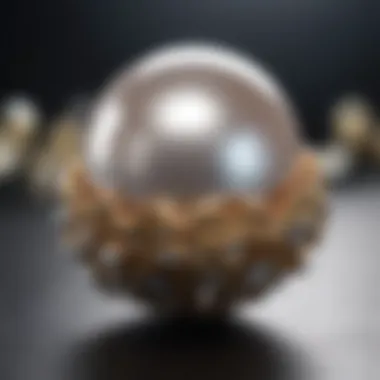
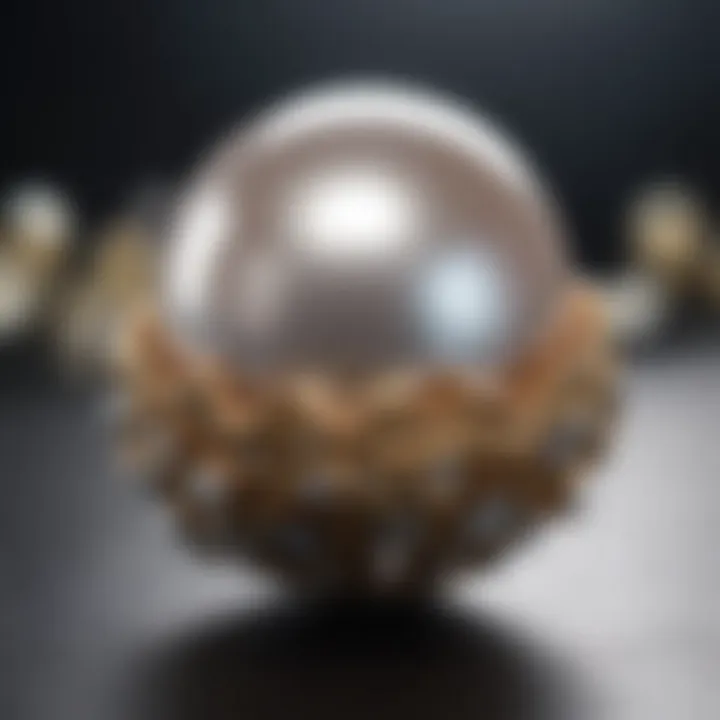
Luster and Surface Quality
Luster is perhaps the most defining feature of a real pearl. It refers to the way light interacts with the pearl's surface, creating a soft glow that can be both mesmerizing and captivating. High-quality pearls exhibit a deep, reflective luster that appears almost like a glowing inner light. This effect stems from the layers of nacre formed by the mollusk over time.
Surface quality is equally crucial in evaluating a pearl’s authenticity. Natural imperfections enhance the character of real pearls, often appearing as slight bumps or irregularities known as "blemishes." In contrast, imitation pearls usually have perfectly smooth surfaces devoid of any marks, making them less desirable.
For those keen on discerning genuine pearls, consider this:
"The luster and surface quality reveal the story of a pearl's journey—each mark tells of its creation beneath the sea."
Shape and Size Variability
Real pearls showcase a fascinating range of shapes and sizes, unlike the mass-produced, uniform imitations. Natural pearls are typically not perfectly round, leading to unique variations that some may actually find more aesthetically appealing. These variations may include baroque shapes, which are irregular and often considered very fashionable in certain jewelry circles.
When assessing the size of pearls, one should keep in mind that larger pearls, especially natural ones, are quite rare and often carry a heftier price tag. Cultured pearls, while more common in larger sizes, also retain a range of shapes and should be considered authentic if they reflect the character typical of their origin.
Color and Overtones
The color spectrum of real pearls ranges widely, from classic white to rich golds, blacks, and pastel shades. Each type of pearl carries its own characteristic color, influenced by the oyster or mollusk species that produced it.
Overtones, the subtle shades that appear alongside a pearl's primary color, add depth and variation. For instance, a white pearl might exhibit pink or green overtones, enhancing its beauty and richness. In contrast, imitation pearls often lack these delicate nuances and can appear flat or overly synthetic in color.
Whether you're on the hunt for that perfect necklace or indulging in a personal collection, these insights serve as a vital toolkit in your journey toward acquiring genuine pearls.
Physical Methods of Testing Pearl Authenticity
When it comes to verifying whether pearls are genuine or fake, physical testing methods stand as a first line of defense. These non-invasive approaches serve as practical tools that anyone, from jewelers to casual collectors, can utilize without needing specialized laboratory equipment. Their simplicity yet effectiveness gives them a unique position in the realm of pearl evaluation.
These physical methods hinge on easily observable characteristics of pearls, making them accessible to a wider audience. They allow potential buyers to make swift assessments before deep diving into more advanced testing techniques. Ultimately, understanding these tests can save time and money and enhance the confidence of buyers in their purchases.
The Tooth Test
Among the most straightforward physical tests for determining pearl authenticity is the tooth test. While it might sound a bit odd, the principle behind it is simple and effective. Take a pearl and gently rub it against the edge of your tooth. Real pearls will feel somewhat gritty and textured due to the microscopic layers that form over time. Conversely, imitation pearls, often made from glass or plastic, will feel smooth, even slippery, when rubbed against the tooth.
This test works well because it leverages the natural construction of pearls:
- Natural Texture: Real pearls have a surface composed of numerous layers called nacre, which creates the resulting roughness.
- Imitation Variation: Materials like plastic or glass do not possess this same structured layering, leading to a smooth feel.
While not infallible, the tooth test is an efficient way to screen pearls before proceeding to more thorough evaluations.
The Thread Test
The thread test offers another practical method for identifying real pearls. Here, the focus lies less on tactile sensations and more on visual observations. The process is simple: take a strand of pearls and look closely at how they sit on the thread or string.
Genuine pearls display unique characteristics in terms of spacing and alignment. Here’s what to look for:
- Irregular Spacing: Authentic pearls won’t always sit perfectly aligned. Instead, they vary in distance due to individual sizes and shapes.
- Subtle imperfections: Real pearls often showcase slight blemishes or inconsistencies in their exterior. This natural variation can serve as a red flag against sophisticated imitation pearls that may appear unnaturally uniform.
While this method may not provide definitive evidence alone, it adds another layer to a comprehensive evaluation of pearls.
Light Reflection Observation
Light holds the key to another physical method for testing pearls, known as light reflection observation. This technique hinges on discerning the way light interacts with the pearl’s surface, enabling a visual spectacle that authentic pearls often demonstrate.
When light strikes a genuine pearl, it tends to reflect in a soft, subtle manner, creating a captivating glow. On the flip side, imitation pearls may shine too brightly, lacking the nuanced depth seen in real pearls. Observers should pay attention to:
- Soft Glow: Look for that luminescent shimmer as genuine pearls reflect light in a more muted, natural way.
- Luster Differences: Real pearls emanate a luster known as "orient," which is a combination of sheen and depth, enhancing their intrinsic beauty. Imitations could appear almost overly glossy or lack this depth altogether.
The manner in which pearls interact with light is perhaps one of the more telling traits for those well-versed in these physical evaluation methods. Taking time to appreciate this characteristic could lead one closer to identifying authentic pearls.
In summary, physical methods of testing pearl authenticity provide insight that, while not exhaustive, can lay a foundation for evaluating pearl quality. It’s essential for buyers to engage with these methods before looking deeper into chemical and advanced testing techniques.
Chemical Analysis and Advanced Techniques
Understanding the chemical composition and structural properties of pearls provides significant insights into their authenticity. While physical tests, like the tooth or thread methods, are helpful, they only scratch the surface of identifying real versus imitation pearls. Chemical analysis, backed by advanced techniques, delves deeper, offering precision and reliability that traditional methods cannot rival.
The benefits of employing chemical analysis in identifying pearls are multifaceted. It not only affirms the pearl's identity but can also unveil its origin, whether it be natural, cultured, or synthetic. Providing consumers and collectors with more concrete evidence empowers them in making decisions rooted in fact rather than conjecture. Additionally, as imitation pearls become increasingly sophisticated, relying solely on appearance is no longer sufficient. Thus, a blend of physical and chemical testing emerges as the gold standard.
In the context of pearl testing, X-ray analysis and spectroscopy play pivotal roles. Each of these advanced techniques offers unique advantages that can help discern genuine pearls from their fake counterparts.
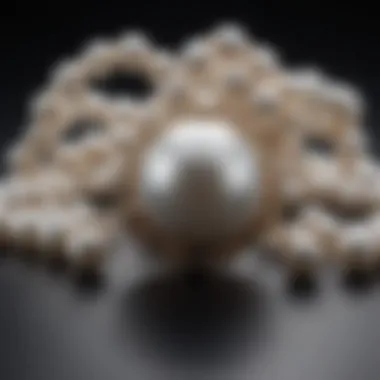
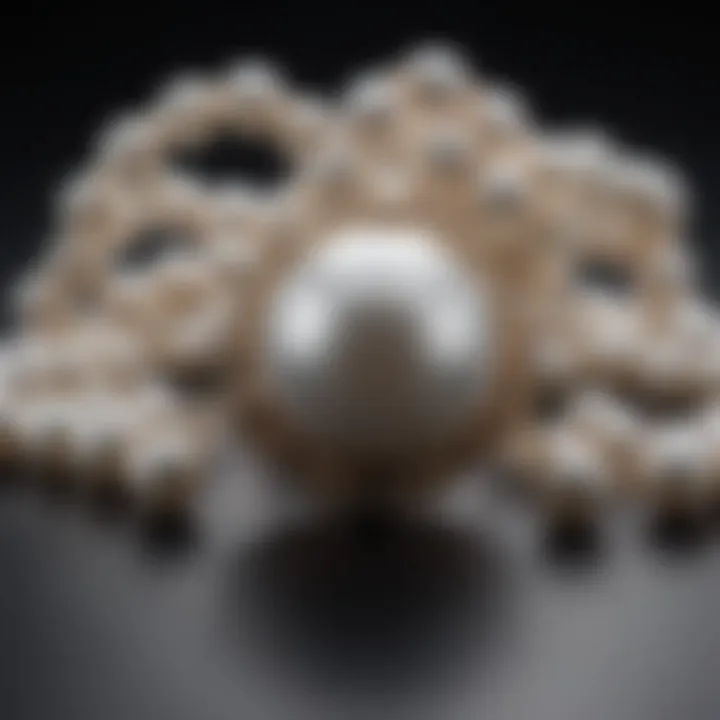
X-Ray Analysis
X-ray analysis is a robust method for investigating the internal structure of pearls. This technique leverages X-rays to penetrate the pearl’s surface and produce an image that reveals its layering and internal characteristics, which are often telling signs of authenticity. Real pearls typically exhibit a unique structure, with concentric layers, while synthetic varieties may show more homogeneity or entirely different patterns.
One of the major benefits of X-ray analysis is its non-destructive nature. Collectors can feel secure knowing their gem remains intact while testing occurs. Moreover, this technology not only identifies authenticity but can also clarify details about the pearl. For instance, insights into the nacre thickness reflect growth rates and environmental factors, allowing deeper understanding of the pearl's history. This method is fascinating and brings an element of scientific inquiry to pearl analysis.
Spectroscopy
Spectroscopy is another advanced method that enhances pearl authenticity testing. This technique involves examining how pearls interact with light, specifically through absorption and emission spectra. Each type of pearl—be it natural, cultured, or synthetic—affects light in distinct ways due to differing compositions and structures.
Utilizing spectroscopy, experts can detect materials used in the production of synthetic pearls, such as plastics and other substances. This method can differentiate among various treatments pearls might undergo to enhance their appearance. Furthermore, by analyzing the spectrum, one can discern subtle differences in the chemical makeup of pearls sourced from different regions.
By embracing these advanced techniques, enthusiasts can confidently navigate the complexities of pearl authenticity. Understanding the intricate details revealed by X-ray analysis and spectroscopy allows for a comprehensive evaluation, ensuring that investments in pearls are authentic and worthwhile.
"The importance of advanced techniques in pearl authenticity cannot be overstated. They transform speculation into certainties, empowering buyers and collectors alike."
In summary, chemical analysis and advanced techniques are game-changers in determining the authenticity of pearls, offering depth, clarity, and assurance to those involved in the unique world of these exquisite gems.
Recognizing Imitation Pearls
Understanding how to recognize imitation pearls is vital for both collectors and casual buyers alike. The allure of pearls often draws individuals into a purchase without a second thought, especially when the price seems too good to be true. By familiarizing themselves with the characteristics of imitation pearls, buyers are better equipped to make informed decisions that ensure they acquire authentic, high-quality jewelry rather than plastic or glass substitutes.
Identifying imitation pearls can save you not just money but also disappointment, as the emotional value of genuine pearls often extends beyond mere aesthetics. Beyond recognition, it’s necessary to grasp why these differences matter—true pearls carry stories from the sea, whereas imitations, despite their shiny surface, lack this depth and history. Thus, the journey to grasp the nuances between real and counterfeit pearls can significantly enhance the overall experience of gem collection or gift-giving.
Common Types of Imitation Pearls
Several types of imitation pearls exist in the market, each varying in material and production method. A few common types include:
- Glass Pearls: These pearls are often manufactured from glass and coated with a nacre-like substance for luster. While they might mimic the shine of real pearls, they often lack the organic iridescence found in genuine specimens.
- Plastic Pearls: Cheap and widely available, these pearls are made from plastic and are usually molded, giving them a very uniform appearance. Their light weight is a dead giveaway, as they feel different compared to a real pearl.
- Shell Pearls: Crafted from the inner shell layers of mollusks and coated to mimic nacre, they offer a slightly more realistic look, but upon close inspection, they still reveal a distinct difference in texture and depth.
- Acrylic Pearls: Similar to plastic, these are manufactured from acrylic, and while they can be durable, they lack the heritage and unique charm inherent in genuine pearls.
Being aware of these types can assist buyers in recognizing what they’re dealing with, paving the way for informed purchasing decisions.
Visual Cues of Imitation Pearls
When it comes to recognizing imitation pearls, there are certain visual cues that can offer substantial clues:
- Surface Imperfection: Real pearls often showcase individual quirks due to their natural formation, whereas imitation pearls tend to have a consistent surface. If you see a perfectly smooth and uniform surface, it's likely to be an imitation.
- Luster Test: The subtle glow produced by genuine pearls results from light reflection through their layers. Imitations typically have an overly shiny, plastic-like sheen that lacks depth.
- Color Uniformity: Authentic pearls vary in tone and shade, showcasing a palette that reflects their natural origins. Imitation pearls often have a uniform color, which can appear unnatural.
- Refraction: Genuine pearls disperse light differently. If you look closely, you may notice slight fluctuations in how light interacts with a genuine pearl versus an imitation. The depth and warmth found in real pearls create distinct, almost shimmering effects, hard to replicate.
"Knowing the nuances helps buyers see past the glitz and glamour of imitation pearls, ensuring that what they wear is not just beautiful but also authentic."
Understanding these visual elements is key to distinguishing between what is real and what is merely a convincing imitation. Taking time to observe, feel, and analyse the characteristics listed above can empower individuals on their pearl purchasing journey, helping them to choose items that truly reflect the elegance and history pearls carry.
Market Considerations for Authentic Pearls
When delving into the realm of pearls, a critical aspect to consider is the market factors that determine their authenticity. Understanding these dimensions not only aids in distinguishing genuine pearls from imitations but also enhances a buyer's overall experience and investment value. In a world where pearls can command high prices, being well-informed is paramount.
Pricing Factors
The price of pearls is influenced by a multitude of aspects that reflect their intrinsic value. Here are some of the primary factors that come into play when determining the pricing of authentic pearls:
- Natural vs. Cultured: Natural pearls are rare and thus tend to fetch astronomical prices compared to cultured ones. A natural pearl's scarcity elevates its market value significantly.
- Size and Shape: Larger pearls are often more expensive. Round pearls are considered the most desirable shape, leading to higher costs.
- Luster and Surface Quality: Pearls with higher luster and fewer blemishes are more sought after. Buyers will pay a premium for pearls exhibiting exceptional brilliance and smooth surfaces.
- Color and Nacre Thickness: Unique colors or deep nacre can increase a pearl's value. The thickness of the nacre affects durability and appearance, impacting the overall price.
- Market Demand: Trends in the jewelry industry and consumer interest can swing prices up or down.
Ultimately, understanding these factors allows buyers to better assess the value and authenticity of the pearls they are considering.
Reputation of Sellers
Choosing a reputable seller is just as crucial as understanding the pearls themselves. The integrity of the seller can often be a litmus test for the pearls' authenticity. Here are considerations for recognizing trustworthy sellers:
- Established History: Buyers should look for retailers or jewelers with a longstanding reputation in the pearl industry, as they are likely to be more knowledgeable and reliable.
- Certifications and Documentation: Reputable sellers should provide certification for their pearls, validating their authenticity and quality. Buyer should insist on documentation that outlines the pearls’ origins and characteristics.
- Customer Reviews and Stories: Engaging with previous customers can offer real insight. Websites like Reddit and specialized forums often have discussions about experiences with different sellers.
- Transparency in Pricing: Sellers should be upfront about the pricing of their pearls, discussing the reasons behind the cost. If it seems too good to be true, it often is.
- Personal Interactions: How sellers interact with buyers can be telling. A knowledgeable and patient seller, who takes time to explain product details and answer questions, builds trust.Evaluating these criteria before purchasing will significantly reduce the risk of obtaining imitation pearls.
"Informed choices lead to wise investments. Always seek transparency and trust."
The Role of Certification in Pearl Purchases
When it comes to investing in pearls, one aspect that cannot be overlooked is the role of certification. For lovers of pearls—whether collectors, designers, or enthusiasts—the assurance of authenticity underpins the purchasing experience. Understanding the significance of certifications can help not only in verifying the quality of the pearls but also in securing peace of mind for the buyer.
Certifications act as a trusted third-party validation of the pearl's authenticity. This can be especially critical given the vast market of imitation and treated pearls. Without proper certification, buyers may unwittingly invest in what they believe to be natural or high-quality pearls, only to discover that their purchase lacks the value they initially thought. The assurance of certification thus protects consumers from deceptive practices and enhances their overall buying confidence.
"Certification provides reassurance and establishes a level of trust between buyers and sellers, which is essential in a market rife with imitations."
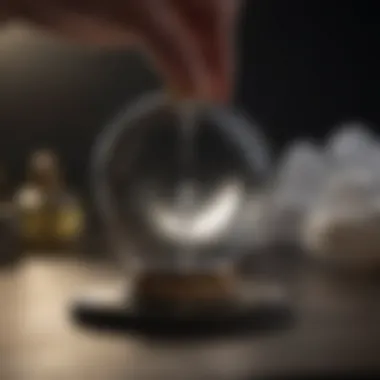
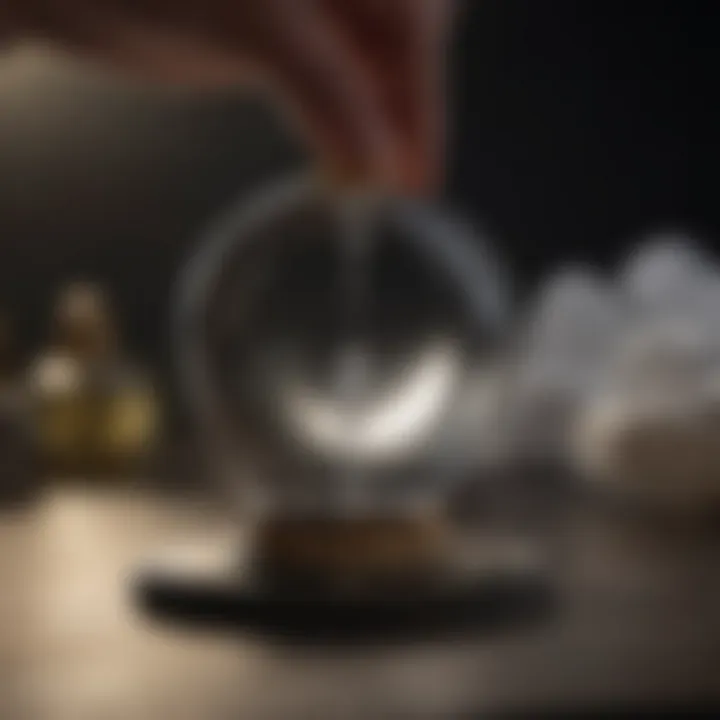
Understanding Pearl Grading
Pearl grading is a vital aspect of the certification process. It involves assessing various characteristics of pearls, which include luster, surface quality, shape, color, and size. Each characteristic contributes to the overall value and quality designation of the pearl.
Key Elements of Pearl Grading:
- Luster: This refers to the sheen and reflective quality of the pearl's surface. Higher luster indicates better quality.
- Surface Quality: Pearls often exhibit blemishes or marks, and the fewer there are, the higher the pearl's grade.
- Shape: Round pearls typically command the highest prices, but other shapes can also be valuable based on their uniqueness.
- Color: Pearls come in various colors, and certain hues may be more desirable in different markets.
- Size: Larger pearls are generally more valuable, but many factors interplay in determining overall quality.
Each of these criteria plays a role in determining the grade that will appear on a pearl's certificate.
Importance of Authenticity Certificates
The importance of authenticity certificates cannot be overstated in a landscape filled with faux and treated pearls. These certificates provide detailed information about the pearl's origin and treatment history, including whether it is natural, cultured, or synthetic. Buyers should particularly look for certificates that:
- Detail the Pearl Type: Knowing whether a pearl is natural or cultured can significantly affect its value.
- Explain Treatments: Some pearls undergo treatments to enhance their quality. This information is crucial for understanding the true value of a pearl.
- Include Grading: A reputable certificate will provide a thorough assessment that highlights the quality aspects mentioned earlier.
Purchasing pearls without authentication can lead to regrettable choices. Authenticity certificates give back the power to buyers, enabling them to ask informed questions and feel secure in their investment. They act as a shield against deception, ensuring that every pearl bought is indeed worth its weight in value, beauty, and history.
Cultural Significance of Pearls
The cultural significance of pearls stretches across various societies, embodying tales of prestige, elegance, and mystery. These precious gems have been treasured throughout history not just for their beauty but also for their deeply ingrained symbolic meanings. Understanding the cultural context surrounding pearls can greatly enrich one’s appreciation for these gemstones. They are not merely adornments; they are imbued with economic, social, and even spiritual dimensions.
Historical Value and Myths
Throughout time, pearls have held a place of honor in numerous civilizations. The ancient Egyptians regarded them as talismans of purity and wealth. They were often found in tombs, indicating their value as offerings for the afterlife. Similarly, in Roman society, pearls were symbols of the ultimate luxury. The phrase "pearls before swine" likely originated from the value placed on these gems; it encapsulates the idea of presenting something precious to those who may not appreciate it.
Moreover, many myths have developed around pearls, attributing mystical properties to them. In some cultures, pearls were viewed as the tears of gods or divine beings, signifying the perfect blend of nature and spiritual significance. This romantic interpretation emphasized the need for reverence towards these beautiful creations of the sea.
Contemporary Symbolism
In contemporary times, pearls continue to stand as emblems of sophistication and refined taste. They are often associated with femininity and elegance, frequently seen in wedding jewelry or formal attire. The phrase "a pearl of wisdom" highlights their symbolic link to knowledge and insight. By wearing pearls, individuals may not only showcase their taste but also harness the allusions of wisdom and integrity that accompany these gems.
Interestingly, different cultures impart specific meanings to pearls. In Japan, for example, pearls are linked to love and loyalty, making them popular choices for wedding gifts. In contrast, in some Eastern traditions, pearls symbolize purity, leading to their use in various rites of passage.
Pearls have transcended their material nature to embody a wide array of cultural narratives, from historical myths to modern symbolism. They serve as a testament to human creativity and the deep-seated values we associate with beauty.
The importance of understanding the cultural significance of pearls lies in the added layer of meaning they provide. When assessing the authenticity of a pearl, one must not only consider its physical characteristics but also its cultural implications. For gemstone enthusiasts and collectors, this depth of understanding enhances both the act of purchasing pearls and their appreciation of this timeless gem.
Caring for and Maintaining Pearl Jewelry
Caring for pearl jewelry is more than just a routine chore; it's an essential aspect of preserving their beauty and value. Pearls, often described as delicate gems, require certain considerations that differ significantly from other types of gemstones or metals. Unlike diamonds or emeralds, pearls are organic materials, which means they have unique characteristics and vulnerabilities. Proper care ensures that your pearls remain lustrous and does not succumb to the wear and tear of everyday life.
Recommended Cleaning Practices
When it comes to cleaning pearls, gentleness is the name of the game. Here are key practices you should sum up in a nutshell:
- Soft Cloth: Use a soft, lint-free cloth to wipe pearls after each wear. This helps remove oils, dust, and any residue that may accumulate on the surface.
- Mild Soapy Water: For deeper cleaning, mix a few drops of mild soap in warm water. Dip the soft cloth into the solution, gently wipe the pearls, and then rinse with clean water. Make sure they do not soak, as prolonged exposure to water can weaken the silk threads that hold the pearls together.
- Avoid Harsh Chemicals: Strong chemicals like bleach or ammonia should never come into contact with pearls, as they can damage the surface and diminish their natural luster.
Wash your hands before handling pearls to prevent any dirt or oil transfer. Also, be wary of cleaning methods designed for stronger gems—pearls simply don’t react well to ultrasonic cleaners or steam cleaning.
Storage Guidelines
How you store your pearl jewelry can significantly impact its longevity. Here are some recommendations to keep them pristine:
- Avoid Tangling: Store pearls separately, ideally in a soft pouch or a dedicated compartment of a jewelry box. This prevents them from rubbing against other jewelry, which can scratch or dull their surface.
- Cool, Dry Place: Keep pearls in a cool area away from direct sunlight. Heat and light can cause pearls to fade or dry out, resulting in cracks or peeling.
- Humidity Control: Pearls thrive in a humid environment. Placing a small bowl of water in the jewelry box can help in maintaining the right moisture level, but make sure it does not cause any dampness to other items or the pearls themselves.
"An ounce of prevention is worth a pound of cure. Keeping pearls clean and safely stored can save you from costly repairs or replacements."
Ending: Ensuring Informed Purchases
In the intricate world of pearls, making an informed purchase is paramount. As a gemstone enthusiast or a potential buyer, possessing a solid understanding of pearl authenticity not only enhances your appreciation for these natural wonders but also safeguards your investment. Knowledge becomes your shield against the labyrinth of imitation pearls that flood the market. Buyers should never underestimate the value of being well-informed.
Recap of Key Points
The journey through this article has presented several essential factors in determining the authenticity of pearls, including:
- Types of Pearls: Understanding natural, cultured, and synthetic pearls lays the foundation for discerning their authenticity. Each type has unique characteristics, making them distinct.
- Key Characteristics: Luster, surface quality, shape, size variability, and color are all indicators of genuine pearls. Knowing these traits empowers buyers to recognize worth beyond superficial beauty.
- Testing Methods: Practical tests like the tooth test and thread test can be invaluable. Additionally, advanced scientific methods such as X-ray analysis provide deeper insights into a pearl's authenticity.
- Imitation Pearls: Recognizing the common types of imitations and their visual cues helps avoid costly mistakes.
- Market Considerations: Pricing factors and seller reputation play significant roles in making secure transactions. Always approach purchases with a discerning eye.
- Certification: Grasping the importance of authenticity certificates can guarantee the quality and origin of your pearls.
- Cultural Significance: Understanding the historical and contemporary relevance of pearls helps to deepen your connection and appreciation for these gems.
Empowerment Through Knowledge
The essence of this article lies in its aim to empower readers. Knowledge about pearls translates directly into informed decision-making. The more you know, the better choices you can make. This empowerment is especially crucial in avoiding scams or misrepresentations in the pearl market.
Educating yourself on the traits and tests for authentic pearls builds confidence in your purchasing power. When you can spot a genuine pearl from an imitation, you’re not just a buyer, but a connoisseur. This level of appreciation can enhance your enjoyment of pearl jewelry while also ensuring that you are making ethical and financially sound purchases.
As you navigate pearl acquisitions, remember, being well-informed is your ticket to enjoying these exquisite treasures, free from doubt or uncertainty. Ultimately, your knowledge stands as the most valuable asset in ensuring that your pearl journey is satisfying and fulfilling.



